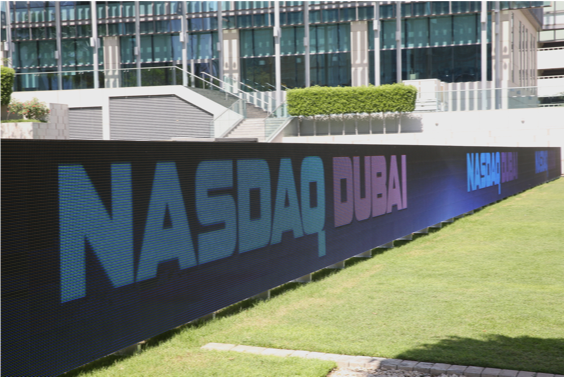Nasdaq Dubai Offers Saudi Futures
20 January 2019 | Admin

In a recent announcement, Nasdaq Dubai, the DIFC-based exchange, said that it would be offering futures contracts on 12 leading Saudi equities. The Saudi futures will be added to the 17 UAE companies whose futures are already traded on the exchange. It also unveiled plans to offer index futures based on the MSCI UAE share index.
The development is noteworthy: It adds another option for investors wanting exposure to the region’s equities, offering exposure to Saudi stocks with a new level of sophistication, and continuing the maturity curve of the region’s capital markets towards more global standards.
Futures are standardised contracts to buy or sell a particular asset at a set price, on a set date in the future. Traders worldwide use futures to reduce risk or to seek profits on changing markets. When the Dubai Gold and Commodities Exchange opened for business in 2005, it was the first futures market in the region, but although it offers single stock futures on global markets, its main trade is in precious metals and commodities. The option to trade Saudi and UAE single stock and index futures opens new opportunities for investors.
The global market in futures is well-established: The Futures Industry Association calculates the total number of futures and options traded worldwide in the first half of 2018 reached 14.9 billion contracts, an increase of 19.7% compared to the first half of 2017. The largest asset categories are equity indices (which showed 30% year-on-year growth), and single equities. Clearly, Nasdaq Dubai wants to attract some of this growth from both regional and international investors with its latest offering.
The development will benefit both traditional regional investors, and the new institutional entrants to the region’s markets who are following Emerging Market index inclusion.
Futures contracts are traded in huge numbers every day, and globally this is a very liquid asset class. By bringing this method of trading to Saudi stocks, Nasdaq Dubai is hoping that new levels of liquidity will be achieved, an important consideration and objective for listed firms. Deeper liquidity also ensures that prices do not fluctuate drastically, especially for contracts that are near maturity: large positions may be taken or cleared out quite easily without any adverse impact on price.
The challenge for Nasdaq Dubai is that liquidity has proved elusive so far. The total value of equities traded on the exchange in 2018 was US$ 1.1 billion. The turnover in futures was even more anaemic, with around US$12 million in value traded in December.
As with many of Nasdaq Dubai’s initiatives, though, the exchange would appear to be playing a long game, building the infrastructure for a thriving market before the demand is there. There are echoes here of the “build it and they will come” philosophy we explored last week in the tripling in size of DIFC.
But liquidity is not the only benefit that futures might bring: It is difficult to trade on inside information in futures markets, for example. Positions are taken on fundamentals or on market trends, which often makes for a cleaner, more transparent market.
And although the Nasdaq Dubai contracts are standardised, futures are a way of gaining exposure to a stock without the full cash exposure that regular trading entails, since leverage is a key element of futures. Nasdaq Dubai requires an initial payment of between 10% and 30% of the value of the trade, meaning that profits (or losses) can far exceed the initial investment.
Futures are also an important vehicle to hedge or manage different kinds of risks. Companies engaged in international trade use futures to manage foreign exchange risk; others hedge their interest rate risk with futures, while hedging the price risk of commodities such as oil is common practice. For long-term equity investors, futures can help to manage volatility and balance risk on their long positions, for example.
For capital markets participants, anything that adds depth of liquidity, breadth of participants and risk mitigation is to be welcomed. The question of how firms should address futures holders through IR is another matter, however.
Although liquidity on Nasdaq Dubai remains subdued, as interest grows in the Saudi market, these single stock futures could become another catalyst for investor attention, and IR teams need to be aware of this possibility. Careful monitoring of the futures being traded on your stock, along with the movement of the average price, can give an indication of market sentiment that may merit investigation. If your stock is being consistently sold on the futures market, you need to know why, and perhaps address any shortcomings in your equity story.
If, on the other hand, your stock is outperforming in the futures market, some investigation may yield new insights into the market.
Whatever the immediate outcome of Nasdaq Dubai’s move, the long term impact of the arrival of futures trading is important. And with a new breed of actively-managed institutional capital now arriving in the region, this asset class can be a valuable source of insight to IR teams and their management.